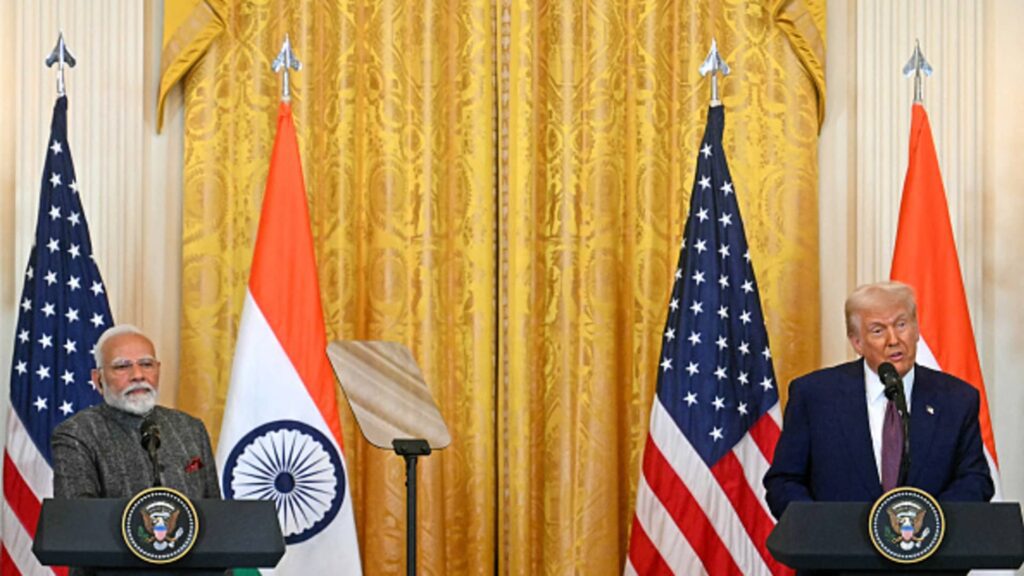Indian media outlet Mint reported on Wednesday that the United States could significantly reduce tariffs on Indian exports as New Delhi and Washington move closer to a trade deal that would reduce New Delhi’s oil purchases from Russia.
As part of the trade deal, the U.S. government could reduce tariffs on Indian exports to 15% to 16% from the current 50%, the Mint reported, citing three anonymous sources familiar with the matter.
The report said India is considering raising its quota for non-GMO corn imports from the United States (currently 500,000 tonnes per year), even with a 15% import tariff, while pushing for a mechanism that would allow both sides to reconsider tariffs and market access over time.
On Tuesday, US President Donald Trump said in a phone call with Indian Prime Minister Narendra Modi that he received assurances that New Delhi would scale back its purchases of Russian crude oil.
“He’s not going to buy too much oil from Russia. Like me, he wants to see the war over. He wants to see the war with Russia, with Ukraine, end. And you know, they’re not going to buy too much oil,” Trump told reporters on Air Force One overseas, threatening that New Delhi would continue to pay “huge” tariffs if he didn’t.
Prime Minister Modi acknowledged his phone conversation with President Trump in a post on X on Wednesday morning local time, without mentioning India’s position on Russian oil, adding that he hoped the two countries would continue to “stand together against terrorism in all its forms.”
President Trump also said that Prime Minister Modi agreed to cut Russian oil purchases in a phone call last week. A day later, a spokesperson for India’s foreign ministry said he was not aware of the call between President Trump and Prime Minister Modi.
On the issue of reducing oil imports from Russia, the spokesperson said on Thursday, “India is an important importer of oil and gas. Protecting the interests of Indian consumers in a volatile energy scenario is our consistent priority. Our import policy is guided solely by this objective.”
Russian oil has been one of the contentious issues in the long-running bilateral trade negotiations between the United States and India. In August, President Trump imposed an additional 25% tariff on exports from India as a “penalty” for purchasing Russian oil, raising the overall tariff to 50%, completely changing the relationship between the two countries.
Indian officials argued that if the country were to stop buying Russian oil, it should have a plan to stabilize its energy market, along with emergency measures to fill the supply gap if Russian barrels were removed from the market.
The two countries had agreed to expand bilateral trade to $500 billion by 2030 during talks in February, but talks broke down after India reportedly did not agree to greater access to its vast agricultural and dairy sectors.
U.S.-India ties further deteriorated when PM Modi met with Russian President Vladimir Putin and Chinese President Xi Jinping in Beijing last month, a move that was seen as a signal to Trump that India intended to strengthen rather than sever ties with Russia.
Since the start of the Ukraine war in 2022, India has become the world’s second-largest buyer of Russian crude oil after China, importing 1.6 million barrels a day in the first half of this year, up from 50,000 barrels a day in 2020, according to the U.S. Energy Information Administration.
In recent weeks, Trump has softened his rhetoric, expressing optimism about the ongoing negotiations and on Tuesday reiterating that Modi is a “great friend.”
The final decision on the trade deal is likely to be conveyed to President Trump and Prime Minister Modi at the ASEAN summit later this month, but neither President Trump nor Prime Minister Modi have officially confirmed their attendance, Mint reported.
“While the broad outlines of the agreement are in place, sensitive areas such as agriculture and energy require political approval before an agreement can be announced,” the report said.
India’s Ministry of Commerce and Industry, the U.S. Department of Commerce, and the Office of the U.S. Trade Representative did not immediately respond to CNBC’s requests for comment.
Bilateral trade between New Delhi and Washington reached a record $132.2 billion in the fiscal year ended March 2025, up more than 10% year-on-year, according to data from the government-backed India Brand Equity Foundation.
India’s exports to the US rose 11.6% to $86.51 billion, while imports from the country rose 8% to $45.69 billion.


